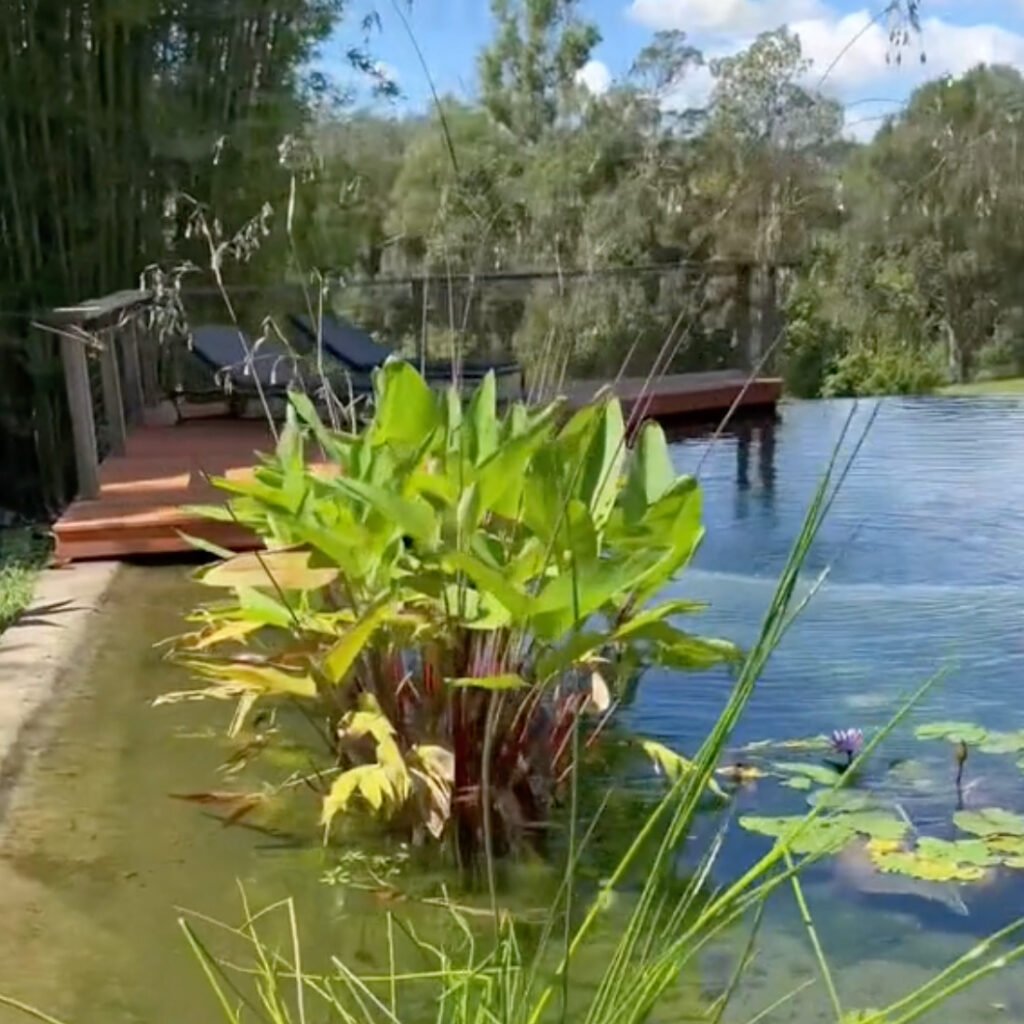Natural swimming pools inspired by nature operate without the need for harsh chemicals, relying instead on the harmonious relationship between perennial plants and aquatic flora to maintain cleanliness and purity.
How do Natural Swimming Pools Stay Pure?

How do chlorine-free pools manage to provide a natural swimming experience while maintaining pure crystal clear water?
Biological filters, such as natural shale, are employed in these pools to absorb phosphates and foster the growth of beneficial bacteria that consume algae and harmful bacteria. Adjacent to the primary swimming area, a “regeneration zone” is created, adorned with plant life. These plants act as a natural filter for the water circulating in and out of the swimming area. The water, always in motion, prevents the accumulation of undesired organic matter. In warmer climates, natural filter materials may even be integrated into the pool itself, and hydroponic plants can contribute to the filtration system while adding aesthetic appeal.
How Does a Natural Pool Work?
A Natural Swimming Pool harnesses the inherent power of its organic structure, effectively employing the self-cleansing abilities found in nature. Impurities are assimilated by the plants, serving as valuable nutrients, while detrimental bacteria are naturally eradicated by aquatic organisms present in the water. This biological self-cleansing attribute renders the use of chemicals completely unnecessary. To complement and optimise these natural processes, technology is utilised in a manner that supports and reinforces their effectiveness.
A Natural Pool will function as it should if the regeneration area is designed correctly and the underwater plants are used properly. The pool is fortified with zooplankton (water fleas, rotifers, paramecia), which play an important role in keeping the water clean on a continual basis. All it takes is a little bit of patience until the pool finds its natural balance.
Components of a natural pool

Submersible Pump

The pump may be completely submersed in water, allowing water to flow to it simply by the force of gravity instead of being “sucked in” by the pump. Mounted at the bottom of the chamber, the pump conveys the water back into the pond through pressure pipes. External traditional sand pool filters may also be used.
Sieve Skimmer

The purpose of the skimmer is to remove floating particles from the natural swimming pool. The water flows over a mesh that removes debris. A mechanism controls the water flow via a flexible flap so that the correct amount of water always flows over the screen. Traditional pool skimmer boxes may also be used
Oxygenator

The oxygenator provides the water plants with carbon dioxide, thereby helping to regulate the pH value of the water. Basically air is pumped into the water through small tubes to keep the oxygen levels high enouh.
Separator

A separation between swimming zone and regeneration zone can be created by fitting a wall, as shown in the illustration above. This can be concrete or even clay.
Biological Filter

Water then passes through the filter zone which is filled with aquatic plants. These plants purify the water making sure it is always clear and fresh.
Size Matters

In the planning of Natural Pools, generally the ratio of the swimming zone to the regeneration zone is 1:1 and the depth is at least two meters in the swimming area. This is the basis for a functioning pool. If more technology is use, the regeneration area can be smaller with less depth.
The Advantages of Natural Swimming Pools
Natural pools come in a variety of shapes and sizes, offering an authentic lake or pond experience. Some are made of concrete, and others feature sloped entries lined with stone, rock, or clay.
Unlike traditional pools, they do not require covering, draining, or refilling during different seasons. In colder climates, these pools can be utilized as mini ice rinks during winter, provided they freeze solidly. In cooler climates, you have the option to install solar or alternative heating systems, allowing for year-round swimming.
Since natural pools rely on circulating water, filter materials, and plant life for purification, they naturally repel pests. Although snakes and frogs might be attracted to these pools initially, they typically depart quickly due to the absence of a reliable food source. However, occasional hand skimming may be necessary to remove unwanted visitors.
Plants Suitable for Natural Swimming Pools
In natural pools, a wide range of plant species can be employed to enhance oxygenation and aid in water filtration. These plants can be categorized into three groups: emergent, deep water-rooted, and floating plants. For temperate climates, commonly utilized plants include water lilies, perennial grasses like Sparganium or cattails, pond sedge, and swamp hibiscus.